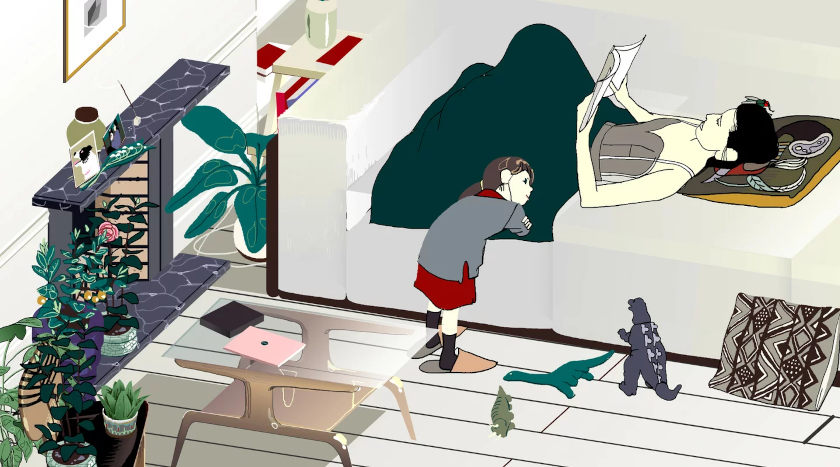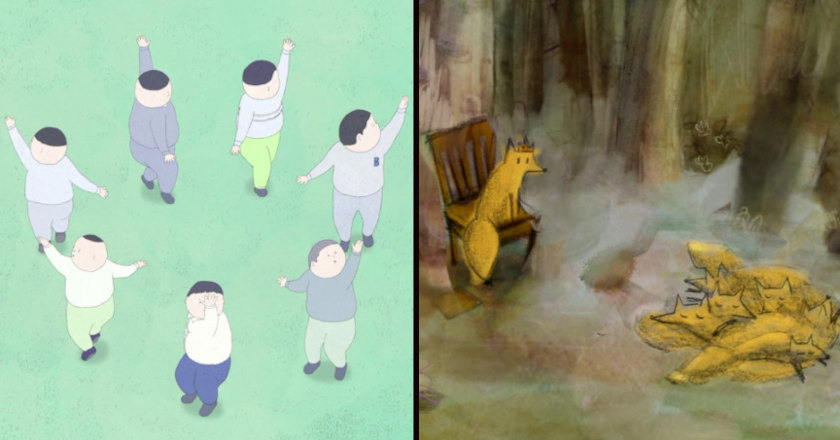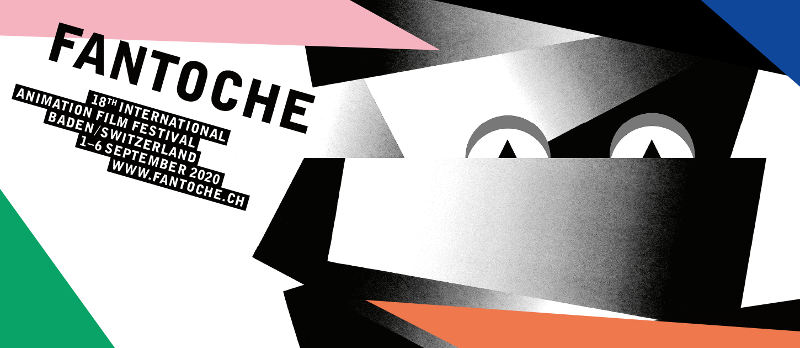Fantoche Presents War and Peace Theme, 2-7 September

For the twelfth edition of the festival, Fantoche (2-7 September 2014, Baden, Switzerland) will be highlighting 'War & Peace' as an overriding festival topic, featuring in four different parts of the programme.
The Festival is referencing the peace congress of Baden, which recognised the 1714 'Peace of Baden' and is being commemorated in the town at the same time as Fantoche. 300 years ago, the Peace of Baden helped bring an end to the war of the Spanish succession. Secondly, events are being held in many places in remembrance of the beginning of the First World War in 1914.For Festival Director Annette Schindler, the topic fits in well with Fantoche: "Animation film-makers deal with all the important topics of their time, including war and its counterpart, peace. So for Fantoche, the celebration of the Peace of Baden is a welcome occasion to bring these films to the big screen and to recognise the contribution of the film-makers to reflecting this social reality."
Fantoche will be exploring the Festival's overarching key focus 'War and Peace' in a number of programme areas: five themed short film programmes, current feature films, two exhibitions in Baden museums, as well as a panel discussion with input from the fields of cartoons, game design and animation film.
Short film programme
It is primarily in short films, whether commissioned works or independent films, that the subject of war and peace has occupied animation artists. An important point of reference is the First World War.
Works that are critical of society, or films which use the power of visual language, are also represented in the programmes. Historic works are combined with contemporary artistic reflections.
Curated by Rolf Bächler, Igor Prassl and Valérie Jaccard.
'Peace, not war! Current anti-war films' 72', 10y
Told from a variety of perspectives, sometimes visually overwhelming, sometimes delicate or comical: the animated anti-war films of the last ten years surprise us with their endless variety of narrative strategies. Despite the different approaches, all of them place the absurdity and the senseless barbarity of war at the center of their stories.
'Give us money ! Propaganda for war bonds', 77', 10y
A trailblazing piece from the century before last, masterful commissioned works, a world-renowned auteur film and a forgotten Swiss: in this historic programme, we do away with the cliché that animators per se are pacifists.
'European pacifism and the war in the Balkans', 74', 14y
The cruelty of war presented in this programme is not the depiction of blood and destruction on the battlefield, but more a view on the absurdity of mind control and the creation of war-controlled societies. A part of the programme presents reactions to the destruction of the Socialist Federal Republic of Yugoslavia.
'Swiss images of war', 68', 10y
Despite the country's neutrality, Swiss animation film-makers have also dealt with the subject of "War and Peace". For this block, we've rounded up abstract metaphors, personal views, as well as propaganda and advertising films from the past sixty years. Each of these films reflects a particular perception of the country from which it comes.
'The latest generation of (anti- )warriors', 61', 12y
Even in today's animation film industry, morbid scenarios such as trench warfare, air battles and other barbarities are explored. And as a look at this year's competition entries shows, young film-makers go back again and again to tales of war refugees.
Feature films
'The Wind Rises' – Hayao Miyazaki, JP 2013, 126', JAP/d, D, 12y
In his "farewell" film, Hayao Miyazaki decided to discard fantasy and tells a story set in Japan before WW II. Based on the true story of the Zero Fighter designer Jiro Horikoshi, the film reveals a reality of life that is built upon dreams and sacrifices.
'Giovanni's Island' – Mizuho Nishikubo, JP 2014, 102', JAP/e, 10y
The hand-drawn anime film "Giovanni's Island" tells the story of ten-year old Junpai on an island in northern
Japan which is occupied by the Russians after Japan's capitulation in WW II. Junpai is involved in underground
resistance by the local people and, at the same time, befriends the children of the occupying forces; an
insurmountable dilemma.
'Nausicaa of the Valley of the Wind' – Hayao Miyazaki, JP 1984, 117', JAP/d/f, 12y
After an apocalyptic war, a toxic jungle covers the world. The clear-sighted Nausicaä observes it by communicating with its inhabitants Ohmus while Tolmekian troops try to burn it. The question how we face contaminated nature is as relevant today as it was in 1984 when the film was first screened.
'From the Earth to the Moon' – Angelos Spartalis, GR 2013, 87', GR/e, 12y
Angelos Spartalis adapts Jules Verne's novel of the same name in the first feature-length animated film to emerge from Greece. His live wire, surreal collage is a colourful muddle of cultural allusions and quotes from a wide range of eras. The film also cleverly delivers humorous yet scathing criticism of habitual warmongering.
Exhibitions
'Negotiating Peace' at the Historic Museum Baden (7.9.2014-25.1.2015)
The exhibition "Negotiating peace – Baden as center of European peace diplomacy 1714" at the Historisches Museum Baden is devoted to the conflict surrounding the Spanish succession, and focuses on the importance of diplomacy 300 years ago.
'Warzone Peace', in the Kunstraum Baden (3 September – 2 November 2014)
Anyone who talks about peace is thinking not just of people living together without war and violence, but also of prosperity and contentment in their life. These things only become possible after military action has ended, but even then they are far from beinga given.This essay-style exhibition takes the theme of peace as a grand but ultimately unattainable utopia; it sets it in the intimate sphere of private life, and moves from the examination of media representations of political power structures to the conflict areas in the Middle East. With works by Andreas Hagenbach, Eric Hattan, Anna Jermolaewa and Daniela Keiser.
Curated by Claudia Spinelli, Director of the Kunstraum Baden
Talk
Panel discussion 'Animated Media Campaign', German/English simultaneous translation
How do different animated media use political crises for information and entertainment? In addition to cartoons and animation film, the question can be illustrated particularly well using the example of games, but each medium has a different way of dealing with the subject: how do game designers cope with the balancing act of developing an absorbing game, and at the same time taking a differentiated position on the depiction of war scenarios? The topic of war – one of the most powerful human conflicts, if not the conflict per se – brings up in particular questions of representation and narration. How is the point of view presented, and what is left out? In whatconflicts and their simulation (cf. game) do forms of representation play a key role (propaganda films vs. anti-war films, caricature, satire, etc.)? How do the new media reflect violence and war situations? And how are times of peace or human utopias depicted?
Curated and moderated by Christine A. Bloch & Mela Kocher
A collaboration with the Department of Game Design of Zurich University of the Arts.
Contributors:
Anette Gehrig (Director Cartoonmuseum Basel)
Anja Kofmel (Film-Maker 'Chris the Swiss')
Michael Schulze von Glasser (Game Expert)
Jeremy Spillmann (Gamedesigner, Blindflug Studios)
Special programme to mark the 300th anniversary of the «Treaty of Baden 1714» Presenting Partner: Fumetto –International Comix-Festival Lucerne.
More at Fantoche festival.










